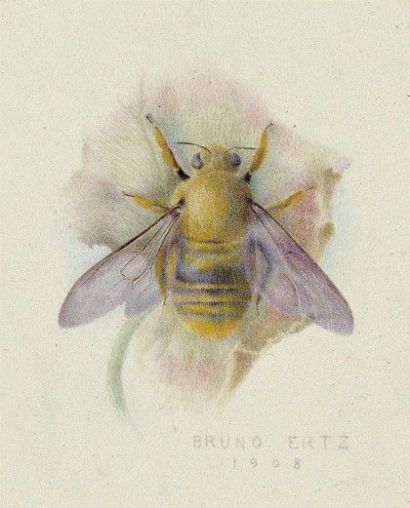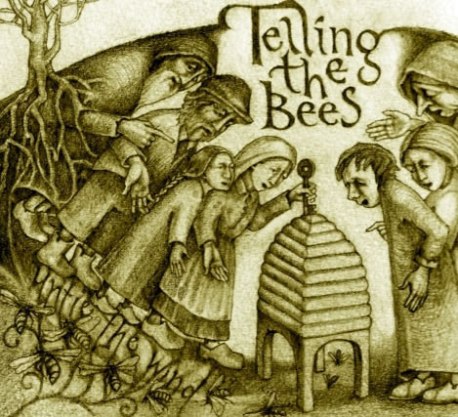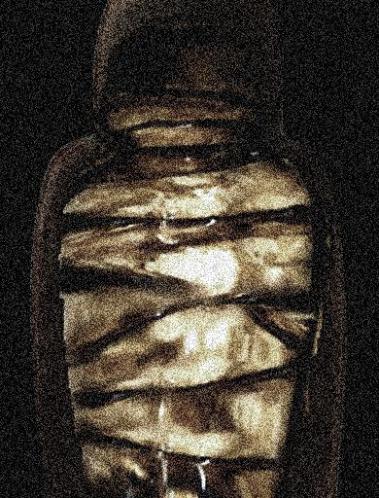There is a strong symbolic bond between rites of passage and honey. Ancient documents depict and record the substance being used in marriage, birth and especially in death rites. For many cultures, especially Ancient Greeks, it was believed that, “Life was bitter, and death sweet”.
Some religions, promised an afterlife full of milk and honey, or even rivers of honey awaiting them after death.
Others, wanting to provide nourishment for the deceased’s soul on it’s journey to the afterlife used honey in various ways. This was perhaps an allusion to that sweetness of death. Egyptians, Greeks, Romans, Hindus, Chinese and many others, placed pots of honey next to their corpses, among other requirements according to each culture’s beliefs. On the deathiversary or anniversary of one’s passing, honey was poured over their grave. Milk, water, wine or the deceased’s favorite spirits were, and still are, used in this way today.
Egyptians also anointed the lips of their deceased priests with honey.
In Brittany, France, that magical land where death is a way of life, there is one ritual we did not examine in our first piece, (which you can read here), that concerns honey. Bertram S. Puckle recounts it in his book, Funeral Customs:
In Brittany, where honey formed an important part of the midnight repast in the death chamber, a curious superstition existed. A little fly was thought to appear on the lips of the corpse, from whence it would presently go to the jar of honey, from which it would take its fill. The fly was none other than the soul of the departed, fortifying itself before taking its long journey into the distant spirit-world.
Among other superstitious customs believed to have its roots in Europe and practiced in 19th century America, is the telling of the bees. We first encountered this bit of weird, old Americana at The Museum Of Jurassic Technology in Los Angeles, where an exhibit, Tell the Bees… Belief, Knowledge, and Hypersymbolic Cognition is named after the practice:
“…as soon as a member of the family has breathed his or her last a younger member of the household… is told to visit the hives, and rattling a chain of small keys tap on the hive and whisper three times: Little brownies, little brownies, your mistress is dead.” – Opening quote from the “Tell the Bees” exhibit at the Museum of Jurassic Technology
The exhibit also relates that an invitation might be attached to the hive and the family would even drape the hive in a black cloth, to signify mourning, a common practice during the Victorian era. If such steps were not taken, the family would put a valuable resource at risk by inviting Death to come and take the bees, as well as their master or mistress. Gifts consisting of leftovers from the funeral feast were sometimes left out for the bees as a sign of gratitude and appreciation. Fail to do so and you could risk offending the bees, who will move on to a more grateful and kind hearted family.
The practice has found its way into songs and poems of the era:
Just the same as a month before,–
The house and the trees,
The barn’s brown gable, the vine by the door,–
Nothing changed but the hives of bees.
Before them, under the garden wall,
Forward and back,
Went drearily singing the chore-girl small,
Draping each hive with a shred of black.
Trembling, I listened: the summer sun
Had the chill of snow;
For I knew she was telling the bees of one
Gone on the journey we all must go!
Then I said to myself, “My Mary weeps
For the dead to-day:
Haply her blind old grandsire sleeps
The fret and the pain of his age away.”
But her dog whined low; on the doorway sill,
With his cane to his chin,
The old man sat; and the chore-girl still
Sung to the bees stealing out and in.
And the song she was singing ever since
In my ear sounds on:–
“Stay at home, pretty bees, fly not hence!
Mistress Mary is dead and gone!”
From “Telling The Bees” by John Greenleaf Whittier (1807-1892)
We know from archaeologists that have excavated ancient Egyptian tombs that honey remains remarkably unspoiled. People have used honey, the substance with a seemingly eternal shelf life, to embalm corpses, or as in Burma during the rainy season, to temporarily preserve the corpse until it can be cremated. If the deceased is a monk, once the corpse is removed and prepared for cremation the honey is extracted from the body first. it is then jarred and sold for exorbitant amounts of money, for it is believed that even a single drop will cure any affliction.
Possibly the most morbid of all practices, which is questionable in its validity, is that of the mellified man. The story comes from Li Shizen, a Chinese pharmacologist during the Ming Dynasty, of a human mummy confection. In his book, Bancao Gangmu, which endeavors to record all plants, animals, minerals and any other item believed to have medicinal properties. In it he writes [translated]:
“…in Arabia there are men 70 to 80 years old who are willing to give their bodies to save others. The subject does not eat food, he only bathes and partakes of honey. After a month he only excretes honey (the urine and feces are entirely honey) and death follows. His fellow men place him in a stone coffin full of honey in which he macerates. The date is put upon the coffin giving the year and month. After a hundred years the seals are removed. A confection is formed which is used for the treatment of broken and wounded limbs. A small amount taken internally will immediately cure the complaint. It is scarce in Arabia where it is called mellified man.”
Image Credits:
Bumblebee 1908 by Bruno Ertz
Tell The Bees by Rima Staines
Mellified Man (artistic impression) by Sachem31
Resources:
Puckle, Bertram S., Funeral Customs (1926)
Buchmann, Stephen L., Letters from the Hive: An Intimate History of Bees, Honey, and Humankind (2005)
The Science Behind Honey’s Eternal Shelf Life, Smithsonian Magazine, August 22, 2013
Roach, Mary, Stiff: The Curious Lives of Human Cadavers (2008)




Pingback: Raw Vegetables and Death Rituals | Nourishing Death